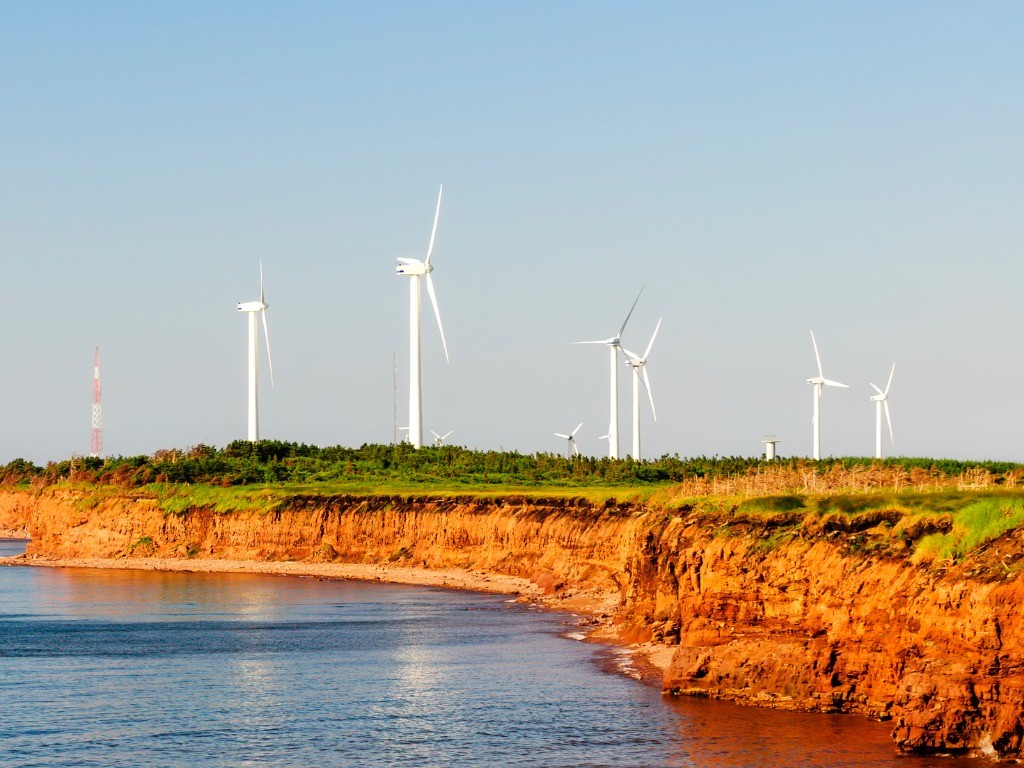A new study from the Dutch power company TenneT says their new wind farm location could cost billions of Euros less than other wind power projects. The farm would be rated at a maximum of 30GW (more than double the output of all current wind farms put together in Europe). A massive project but the key to making it viable is a 5×5 kilometre artificial island.
The reason has to do with the challenges of wind power technology.
Location is key when it comes to producing wind power. Constant high-speed wind is essential. At full capacity, some wind turbines can convert up to 40% of the energy in the wind into electrical energy. It may sound low, but that’s actually pretty good as far as power generation goes. The catch is, however, it rarely converts that well because the turbine rarely operates at full capacity. As the sailors of old will tell you, the wind rarely cooperates and efficiencies plummet as wind speed goes down.
Another major obstacle in wind power is the amount of space needed. As far as renewable energy goes, wind turbines have one of the worst energy produced to space occupied ratios. It takes a lot of space to make not a lot of electricity.
Land has always been valuable is an especially it is a scarce resource in Europe. Land-based wind farms are increasingly faced with opposition from locals due to suspected and proven associated health risks. The fix to this is to place wind turbines along the shoreline where people aren’t trying to live.
Relocating to the shore brings its own problems and added costs. The area along the shore where turbines can be built is narrow. Go too deep and it gets too costly to build. It’s also farther away from a large portion of people who need the electricity. The farther away it is the more transmission lines it takes to get the electricity where it needs to be.
And maybe the biggest obstacle is the increased maintenance costs. Salt water is very corrosive to equipment. Wind turbines have large moving parts they already require a fair bit of maintenance to keep running in top condition and the additional maintenance from the corrosive environment doesn’t do wind power any favours.
Operation and maintenance is the reason an artificial island is an essential part of this new plan. First, TenneT found a perfect location for a massive wind farm just 125KM off the East Yorkshire coast is Dogger Bank. This part of the north sea is shallow enough to house a large cluster of wind turbines at a reasonable price. It is also in a central location to many customers in the UK, Netherlands and even Belgium, Germany and Denmark. The shorter distances mean power could be transmitted with a relatively low cost to any one or more of these locations.
Servicing and maintaining would be a nightmare without a close central location to work from. Hence the proposal of an artificial island to run maintenance operations from. It will also be able to organize the thousands of spaghetti-like lines that would run to and from each wind turbine.
Building the artificial island is a large chunk of the project cost but would result in a huge reduction in everyday operating cost.
Creating the artificial island is actually not a very complex process. It just takes a lot of grunt work to do. It’s much like building a sand castle on the beach. Just put as much sand and rock as you can into a pile. Eventually, it gets big enough to lay down concrete and build structures on. The military is quite adept at doing this for small island outposts.
Getting enough sand and rock is the real challenge. To buy sand and gravel and ship it to the location would quickly turn making an island into an economic disaster. Instead what they do is scrape as much sand, coral and rock as they can from the surrounding seabed. Then they crush it up and push it into a central pile where they want the island.
It’s ironic that a project to produce environmentally friendly renewable energy would first require the devastation of a large area of ocean habitat – however, the benefits may still outweigh the cost because without the island TenneT’s entire strategy falls apart.
In general, the plan is being accepted as a reasonable and viable opportunity. However, with a project this big, there are a lot of different contracts and factors that come into play. Right now this is still just an idea and TenneT needs a large investment partner to achieve their plan.
If they are able to line up everything they estimate a portion of the wind farm could be up and operating by 2027.


